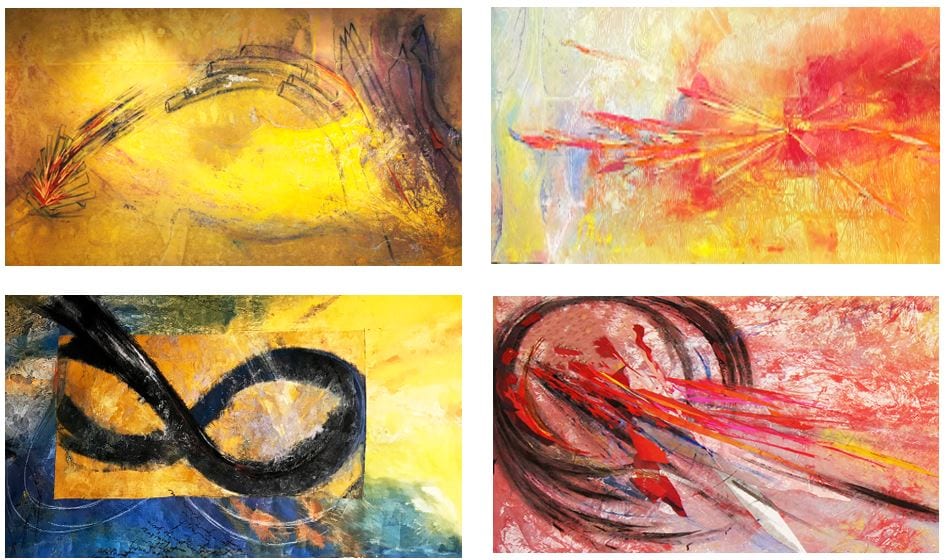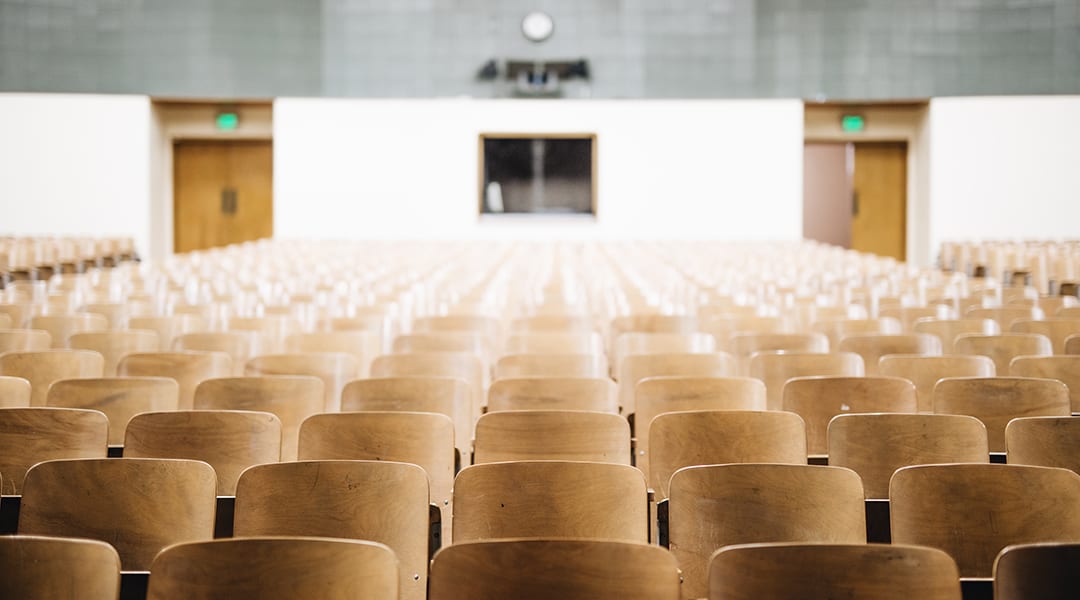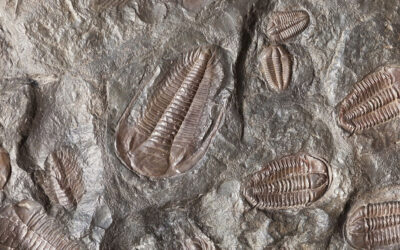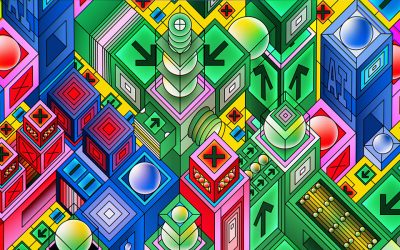Image credit: Nathan Dumlao on Unsplash
The pandemic and lockdown challenges of 2020 — envisioned to continue into 2021 — have forced me to completely rethink the way I have been teaching materials science in the chemistry department at the University of Toronto for half a century.
Arriving at the university as an assistant professor in 1969, I discovered that materials were not part of the chemistry undergraduate curriculum; instead, the subject was taught in materials science and engineering. This seemed strange to me at the time as I believed materials discovery begins in a chemistry laboratory with synthesis, followed by explorations of structure and property, a search for functionality, and ultimately to recognizing utility. Without synthesis there would be no materials, and without materials there would be no synthesis.
Met by strong collegial opposition, I stood my ground, and materials chemistry teaching and research was founded in the chemistry department where it has grown and flourished ever since.
Courses in materials chemistry are now an integral part of the chemistry specialist program: beginning in the second year with basic physical concepts of the solid state, introducing physicochemical principles in the third year, extending to synthetic chemistry all the way to function and utility aspects in the fourth year.
The overarching goal of this three-year experience is to provide students with an “umbrella” view of the main classes of materials across the periodic table, and the ways in which they have contributed to society and changed our world for the better. It comes as a quite a surprise to learn that as many as 75 elements of the periodic table are used to make the electronic, optical, and mechanical components in an iPhone, and many of them are synthesized by chemists in a materials laboratory!
A new paradigm for teaching
That said, the computer screen is no longer a limitation given the powerful interactive experiences of these tools that raise our expectations for creatively learning about scientific concepts that promise “awe-inspiring experiences with unparalleled freedom”. This is all thanks to a blazing-fast processor and next-generation graphics to fully absorb you in multidimensional eye-candy.
Even if some of these commercial claims turn out to deliver on their ambitions and promise, that would certainly open the gateway to the future of education — and materials made all of this happen!
In this endeavor, practitioners of live-lecturing (not just in the field of materials) know the importance of being in the same space with a group of students to be able to feel, sense, and react to the moment by recognizing and responding to eye and bodily movements, changes in facial expression, alterations in mood triggered by the flow of information.
It is hard to replicate this social experience and community spirit through the impersonal and rarefied medium of cyberspace. While a computer screen and fancy online software may suffice for efficient transference and management of information, the human connectivity factor that excites, motivates, and inspires learning is essentially nulled in a robotic relationship.
There is an art to catalyzing knowledge transfer and a science to developing innovative teaching that is naturally connected by the all-purpose process of creativity. This versatile process encompasses critical thinking, real world problem-solving, discovering, inventing and innovating, and ideas-generation. It explores new ways of communicating complex information in artistic ways, providing some essential lessons learned from combining complementary practices of connecting and transforming information, data, knowledge, ideas, concepts, and theories. It offers some common sense strategies for moving beyond the roadblocks that form from our self-imposed mental barriers, as well as our compartmentalized ways of knowing the world and representing our knowledge.
Out-of-the-box learning
I undertook this bold and adventurous transformation in materials education in the fall semester of 2020 with a small class of students who were willing to explore and experiment with unconventional ways of knowledge transfer through the medium of online lecturing, with all assignments, examinations, and evaluations being visual and oral in content.
Zoom for lectures and Quercus for course management adequately fulfilled our online needs. A meet-and-greet session before the course officially began allowed me and the students to discuss and decide upon the best ways to satisfy their educational requirements through oral rather than written evaluation.
Before discussing how this was all organized and would be played out in practice, first the course content and student learning outcomes were considered. The course comprised 24, one-hour lectures in advanced materials chemistry with the aim being to provide a complete and cohesive introduction to the materials world, especially how a materials chemist thinks about the art and science of making materials with a purpose.
It involved a comprehensive investigation of a portfolio of synthetic methods for preparing diverse classes of inorganic materials with properties and function intentionally tailored for a particular use. Several contemporary issues were presented and critically evaluated to introduce the student to recent highlights and activities in the real world of materials from lab-to-market.
I opened the course with an unusual one-hour introduction to the four paradigms of science and how they are changing the face of materials discovery. Each paradigm shift has many iconic pioneers: I used Faraday, Maxwell, Kohn, and Hinton as disruptors of the prevailing view of the times. In the first, second, and third paradigms, new materials are discovered by experimentation, theory, and/or computation.
This has evolved today into the fourth paradigm of data-driven materials science, where data is gathered in data infrastructures, and artificial intelligence, machine learning, and robotic automation enable the discovery of new materials.
I began with the traditional practice of discovering materials that relies on serial synthetic methods using human intelligence, experiential learning, and hands-on serial experimentation. A case is made for how this tried-and-true approach is being challenged by the advent of artificial intelligence, machine learning and robotic automation, a parallel approach designed to fast-track the process of materials discovery.
The point of this unusual exercise at the undergraduate level is to alert students to the way materials science is changing with humans working with machines to accelerate the process of materials discovery.
An interesting take-home for the students were questions around whether humans will be replaced by machines or instead will have to learn to work together harmoniously in the continuous quest for new materials. I also raise the interesting yet disquieting possibility of machine intelligence and machine creativity outperforming that of humans, keeping in mind that human creativity is just the product of a neural network, noting neural connectivity weighs about the square root of Avogadro’s number, which is thousands of times bigger that currently trained neural networks. Hence there is no reason to believe that a machine cannot be as creative as a human, it just needs to be at the same scale and use similar learning algorithms. If bigger, trained in a better way, or given more data, it would be extremely surprising if it were not a lot more creative.
It was mutually agreed in discussions that traditional written assignments and exams would be replaced by oral presentations, typically with 3-5 power-point slides in 3-5 minutes, followed by a 3-5-minute question and answer period. The topics covered were different for each student and required reading and understanding beyond just the lecture content.
The brevity of this form of oral exam required not just a deep understanding of the content of the lectures underpinning the topic chosen by the student. It also demanded tremendous judgement as to what was important and the most concise and effective way to structure and deliver their presentation and respond to question under strict constraints of time. This new experience honed their oral delivery skills and artistic abilities to correctly explain and visually represent the scientific content of their presentation.
The oral approach was also valuable with respect to online integrity as it avoided the opportunity of any easy form of cheating and removed the burden of having to implement anti-cheating methods, such as surveillance, which create additional stress for students and instructors who have to navigate them.
Of notable interest in the context of this online experience was the ability to judge the level of understanding of the course material in a virtual oral presentation and question and answer examination setting, compared to the written mode in a conventional exam situation. The knowledge base of the students, the thought processes during questioning, the ability to connect, present and discuss ideas was more readily appreciated live than in written form.
Incorporating art into science learning
A unique feature — greatly enjoyed and appreciated — of the course was the art/science project. The students were asked to use any medium, such as a graphic illustration, sculpture, music, mime or dance, to create an art/science representation of a given facet of materials chemistry, which excites the imagination, awakens the aesthetics, and arouses interest and understanding. Students were also asked to provide a one-paragraph explanation of how they visualize the art encapsulated in the science and how the science inspired the art, leading to a better understanding and appreciation of both.
Originality and clarity were being sought from the students, where the artistic work was geared to the presentation of a materials concept in a novel art form aimed at enriching the understanding of a concept and ensuring the connection between the creative work and the materials concept is clear and understandable.
It was an exciting educational experience for the students, and it was clear from their impressively creative presentations that there is a visual artist in every scientist. The ability of the students to express complex concepts and principles in science in an artistic form, positively enhanced the understanding of the science and heightened their interest in the subject.
We are surrounded by materials art in the natural world and the science that has enabled the materials world we have created. There is something magical and even mystical about the aesthetics of geologically and biologically created solids and how it has inspired the incredibly beautiful technologies we create from them.
I can’t help thinking about the materials art imbued in Ernst Haeckel’s hand-drawn etchings of the lace-like filigree constructions of siliceous diatoms and how the materials science of silica enabled the drawing of kilometer-long, glass fiber optical telecommunication networks.

Lockdown and student-teacher interactions
There is one big thing missing from this story of online education: the positivity of the socio-educational student-teacher experience. We all sit in a small office space at home or work talking to each other through a computer screen. Even with a colorful background this is very different from a large amphitheater filled with students interacting cerebrally and dynamically with the professor. In a lockdown, the seats in the lecture theater are empty.
This is a sorely missing aspect of teaching and learning, and is virtually impossible to emulate online. My suggestion is we replace ourselves occupying those little black boxes, isolated from one another on a computer screen, to instead be placed sitting together in those empty seats in the lecture theater, a step towards simulating the teaching-learning environment when we are all together in the same space live and benefiting from each other’s presence.
Lockdown has been a stressful, uncertain, and dark time for all of civil society, yet in the case of distance teaching and learning, the bright side of the story is that instructors and students have been provided with a once-in-a-lifetime opportunity to be able to work together and devise creative solutions for an exciting and meaningful experience online. It’s as if teachers and students have gone back to college to rethink the entire way we communicate and study, which is likely to have an everlasting effect on the post-pandemic system of education.
Written by: Geoffrey Ozin, Jon Babi, and Todd Siler
Chemistry Department, University of Toronto, Ontario, Canada, Web sites: www.nanowizard.info, www.solarfuels.utoronto.ca, www.artnanoinnovations.com; Denver Colorado, U.S.A, www.toddsilerart.com

















